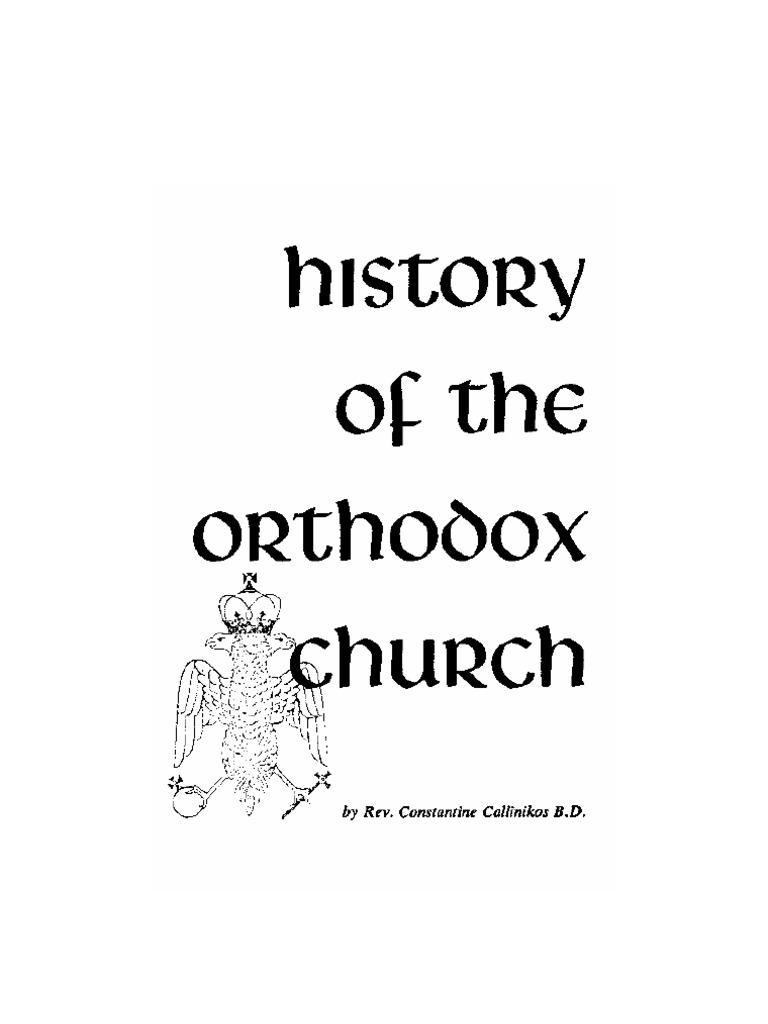The emergence of the Orthodox Church represents a significant chapter in the vast and intricate tapestry of Christian history. To comprehend its inception, one must traverse a journey that begins with Jesus Christ, continues through the early Christian community, and culminates in the grandeur of Constantinople. This exploration, like a meandering river, is filled with twists and turns, reflecting the multitude of influences that shaped early Christianity.
Jesus Christ, the cornerstone of Christianity, was born into a tumultuous milieu—one marked by Roman dominance and Jewish tradition. His teachings, imbued with love, compassion, and radical inclusivity, laid the groundwork for an innovative religious paradigm that transcended ethnic and cultural boundaries. The proclamation of the Kingdom of God challenged the status quo and sowed the seeds for a movement that would burgeon into the Christian faith.
After Christ’s crucifixion and resurrection, the Apostles became the primary conduits of His teachings. The Pentecost experience, a divine outpouring of the Holy Spirit upon the disciples, was a pivotal moment, birthing a fervent community of believers, often referred to as the ‘early Church.’ This nascent group was marked by a fervent devotion to prayer, communal living, and a radical commitment to witness the life and resurrection of Jesus. Within a few decades, this fledgling movement spread throughout the Mediterranean world, fueled by missionaries like Paul the Apostle who traversed vast landscapes, establishing congregations and nurturing believers.
The first few centuries of Christianity were characterized by a dynamic interplay of growth and persecution. The early Christians faced systemic oppression from an imperial power that viewed them as subversive. However, rather than quelling the flame of faith, this persecution often catalyzed a deeper commitment to the teachings of Christ. Martyrdom, as a result, became a poignant symbol of unwavering faith. Iconic figures such as Stephen, the first martyr, galvanized the community, embedding a spirit of resilience and determination to uphold Christian doctrines even in the face of adversity.
As the religious landscape evolved, so too did the need for a unified doctrine. The Council of Nicaea in 325 CE marked a seminal moment to address the various theological disputes that plagued the Church. Convened by Emperor Constantine, this assembly aimed to achieve a delicate equilibrium within the burgeoning Church. The Nicene Creed emerged as a declaration of faith, encapsulating core beliefs and establishing a foundation that would endure through the ages. However, this was not merely an ecclesiastical formality; it represented the nascent desire for orthodoxy, a unifying identity among diverse communities scattered across the Roman Empire.
Constantine’s role in the establishment of the Orthodox Church cannot be understated. His conversion to Christianity was not just a personal transformation but a seismic political shift that altered the trajectory of the faith. He envisioned a church that could coexist with the state, one that could illuminate the darkness of the empire with the light of Christ. His establishment of Constantinople as a new imperial capital further symbolized this intertwining of faith and governance. The city, often dubbed ‘New Rome,’ became a thriving center of Christian thought and cultural evolution, where theological discussions flourished like a vibrant garden in springtime.
The theological disputes that followed were akin to the clashing of titans, each vying for dominance over the interpretation of core Christian beliefs. The Arian controversy, which questioned the divine nature of Christ, ignited heated debates and led to schisms within the Church. The Council of Constantinople in 381 CE, convened to address these tensions, underscored the importance of established doctrine and the necessity of ecclesiastical authority. This council reaffirmed the Nicene Creed and expanded upon it, cementing the foundations of Orthodox Christianity.
The influence of the Orthodox Church began to permeate every aspect of life within the Byzantine Empire. The Church was seen not only as a spiritual institution but also as a societal pillar. Monasticism flourished, with figures like Saint Basil and Saint Anthony laying the groundwork for monastic communities that emphasized asceticism, prayer, and community life. Monasteries became sanctuaries of learning and spiritual fervor. They were bastions of faith that produced theologians, scholars, and artists, each contributing to the rich cultural heritage of Orthodox Christianity.
Throughout the Byzantine era, the Orthodox Church deftly wielded its influence. The interplay of politics and religion was intricate, as emperors sought legitimacy through the Church while bishops wielded ecclesiastical power that rivaled imperial authority. This duality fostered a rich tapestry of faith that encapsulated not just doctrinal purity but also a culture steeped in tradition, iconography, and liturgical splendor. The grandeur of the Hagia Sophia stands as a testament to this harmonious marriage of faith and governance, a physical embodiment of the spiritual aspirations and artistic prowess of the Orthodox Church.
Now, as we reflect on the rich tapestry that wove the Orthodox Church into the very fabric of society, we understand its unique appeal is inherently linked to its deep roots in tradition, its commitment to maintaining doctrinal integrity, and its vibrant community life. The journey from Christ to Constantinople was not merely a historical progression but a narrative woven with faith, struggle, and triumph. The Orthodox Church emerged as a powerful entity, distinct yet rooted in the foundational tenets established by Christ and carried forth by His Apostles. This odyssey endures today, inviting believers and seekers alike to uncover the profound mysteries and transcendent truths that lie within its sacred embrace.



